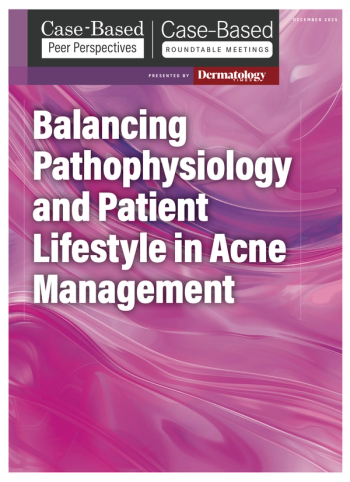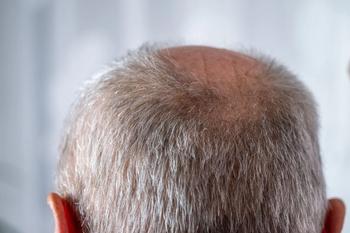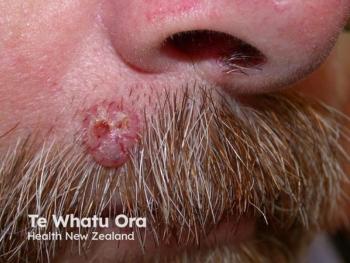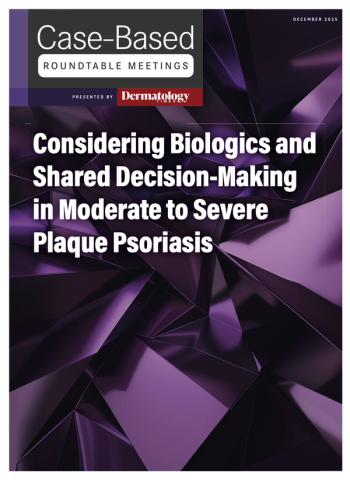
Journal Digest: April 30
Key Takeaways
- Dermatology's environmental impact is significant, prompting sustainability initiatives by major associations focusing on research, education, and advocacy.
- Submicrobial dosing of antibiotics is increasingly considered effective by newer dermatologists for inflammatory skin conditions, especially when cost is not a barrier.
This review of the latest dermatologic studies includes insights into the environmental impact of dermatology, submicrobial dosing of antibiotics in dermatology, and more.
International Journal of Dermatology: Environmental Impact of Dermatology and Action Towards It: A Narrative Review
A recent review outlined the dermatology specialty's growing recognition of its environmental impact and the need for sustainability. Dermatological care involves high resource consumption, especially in topicals, procedures, and biologics, contributing to greenhouse gas emissions, waste, and water usage. The study identified outpatient dermatology’s major emissions sources as purchased goods and services, patient travel, and waste. Six major dermatology associations have established climate or sustainability working groups focused on research, education, and advocacy.1
Australasian Journal of Dermatology: Submicrobial Dosing of Antibiotics in Dermatology: A Survey of Real World Practice Patterns
A recent survey explored dermatologists’ perspectives on submicrobial dosing (sD) of antibiotics, or doses below the antimicrobial threshold, in managing inflammatory skin conditions like acne, rosacea, bullous pemphigoid, pemphigus vulgaris, and hidradenitis suppurativa. Responses indicated that dermatologists with fewer years in practice were more likely to consider sD as effective as full-dose antibiotics. Those supportive of sD were significantly more likely to prescribe it across conditions, especially when insurance and cost were not limiting factors.2
Translational Biophotonics: Optical Coherence Tomography Angiography in the Assessment of Vulvar Lichen Sclerosus Vascularity and Epithelial Thickness In Vivo
A recent proof-of-concept study investigated the use of 1.7-μm optical coherence tomography (OCT) and OCT angiography (OCTA) to noninvasively evaluate vulvar lichen sclerosus (VLS). VLS typically requires biopsies for diagnosis and malignancy monitoring, but this study explored a noninvasive imaging method capable of assessing epithelial thickness and vascular changes across vulvar anatomical sites. The findings suggest that OCT/OCTA technology, with enhanced resolution and tissue penetration, could serve as a promising alternative to biopsy, improving real-time disease monitoring and patient care.3
Journal of the European Academy of Dermatology and Venereology: Consensus on core domains for hand eczema trials: Signs, symptoms, control and quality of life
A recent international consensus study aimed to establish core outcome domains for hand eczema (HE) trials to ensure consistency and comparability of results. An online Delphi survey and a consensus meeting involving physicians, patients, and experts resulted in agreement on 4 core domains: signs of HE (with 5 subdomains), symptoms of HE (2 subdomains), HE-related quality of life (4 subdomains), and HE control over time (4 subdomains). Controversial topics included desquamation/scaling and emotional impact.4
Lasers in Surgery and Medicine: The 730 nm Picosecond Titanium Sapphire Laser for Treatment of Kratom-Induced Hyperpigmentation
A recent case series evaluated the use of the 730-nm picosecond titanium-sapphire laser for treating kratom-induced hyperpigmentation. Patients treated with the laser showed significant improvement in pigmentation, with no adverse effects or recurrence observed during follow-up. This study represents the first documented use of this laser for kratom-induced hyperpigmentation, highlighting its potential as a precise and minimally disruptive treatment option for this condition.5
References
- Niebel D, Tso S, Parker ER, et al. Environmental impact of dermatology and action towards it: a narrative review. Int J Dermatol. Published online April 25, 2025.
doi:10.1111/ijd.17810 - Zou H, Tabatabaei E, Johnson JH, Daveluy S. Submicrobial dosing of antibiotics in dermatology: a survey of real world practice patterns. Australas J Dermatol. Published online April 25, 2025.
doi:10.1111/ajd.14518 - Sreeramachandra Murthy R, Kraus CN, Lane F, Chen Z. Optical coherence tomography angiography in the assessment of vulvar lichen sclerosus vascularity and epithelial thickness in vivo. Transl Biophotonics. Published online April 24, 2025.
doi:10.1002/tbio.70000 - Rönsch H, Drewitz KP, Atwater AR, et al. Consensus on core domains for hand eczema trials: signs, symptoms, control and quality of life. J Eur Acad Dermatol Venereol. Published online April 25, 2025.
doi:10.1111/jdv.20671 - Alhadyani AA, Samaan C, Munavalli GS. The 730 nm picosecond titanium sapphire laser for treatment of kratom-induced hyperpigmentation. Lasers Surg Med. Published online April 23, 2025.
doi:10.1002/lsm.70019
What new studies have you been involved with or authored? Share with us by emailing
Newsletter
Like what you’re reading? Subscribe to Dermatology Times for weekly updates on therapies, innovations, and real-world practice tips.


















